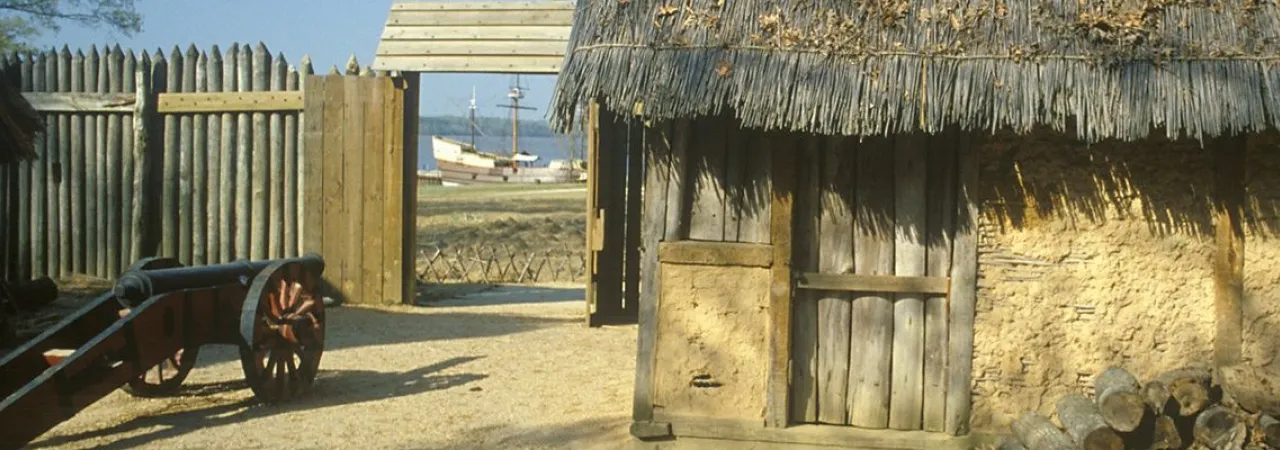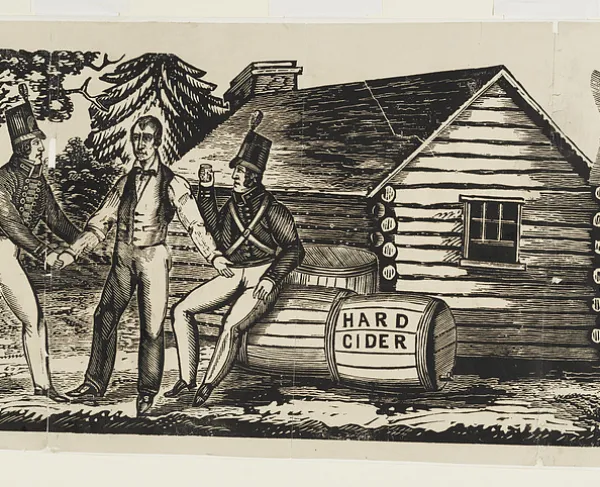Everyday Life in Colonial America

When North America was first discovered, almost every imperial European power began to settle this New World. Initially, British settlers arrived in the regions of New England, the Chesapeake area, and what is now considered the South, while French holdings included areas west of the Mississippi River such as Louisiana, Illinois, and much of Canada, with the Spanish taking hold of Florida, Texas, and much of the Caribbean. Additionally, Dutch colonists settled in the areas of the Hudson River Valley and the modern-day New York City, which was named "New Amsterdam" by the settlers. Furthermore, the Swedish Empire had holdings in America as well, which formed a large ethnic Swedish and Finnish settlement along the Delaware River and into parts of current New Jersey. Eventually, whether through warfare or diplomacy, the French, British, and Spanish Empires became the owners of land in the current United States. Most colonial settlers after this period of consolidation arrived in the Thirteen Colonies from Britain.
Thus, early colonists consisted of a mixture of diverse ethnic, religious, linguistic, and racial groups. Once organized into Thirteen Colonies to be ruled by the British Empire, the colonists settled into a mercantile economy that separated the colonies into three distinct regions which contained religions and exports unique to each area. The three regions were recognized as the New England Colonies, the Middle Colonies, and the Southern Colonies.
THE NEW ENGLAND COLONIES:
The New England Colonies were formed by the joining of various Massachusetts colonies with other colonies in the region. What began as a small Puritan settlement in Plymouth, now became a large collection of colonies that formed a larger colony that was recognized as one of the Thirteen Colonies by the British Crown by name of “Massachusetts”. Eventually, the settlers of Massachusetts began to spread out to neighboring lands, which established colonies in Rhode Island, New Hampshire, and Connecticut. The Massachusetts Colony was the most populous of these New England Colonies, which resulted in life being focused on industry, seaborn trade, and sprawling urban life.
The average colonist most likely centered their life around the city of Boston, as the port was the largest in the area and contained the largest number of merchant vessels throughout the colonies. As a result, these colonists had trades useful to the import and export of goods in addition to other local trades. A male colonist had the ability to farm for individual substance rather than large scale commercial agriculture due to the poor soil, work in a warehouse, build ships, fish or go whaling, enter the fur trade, collect maple products, or brew beer or other alcoholic beverages. Due to the urban nature of life in this region, local politics played a large role in the life of the colonists, as town halls were pioneered as policy tools which later played a larger role during the American Revolution. The large marketplace of ideas and goods became centralized in the Boston area, which led to the publication of The Boston News-Letter, the first weekly newspaper, in 1704. Despite the radical nature of political discourse within the urban port areas, the region was defined by its strong adherence to the Puritan religion and its values. This created a further divide between the Puritans and the Church of England, and eventually England as an entity. Thus, ironically, New England felt the most resentment to English colonial rule.
THE MIDDLE COLONIES:
The Middle Colonies was considered the breadbasket of the Thirteen Colonies. This region was classified by the fertile farmland and religious liberty. The Middle Colonies featured a large amount of ethnic and linguistic diversity, which only increased due to religious tolerance as this facilitated the immigration of members of numerous Protestant groups. For instance, King Charles II of England gave William Penn, a prominent Quaker, a large piece of land west of the Delaware River. This land grant created the colony of Pennsylvania, which contained a government made up of Quakers that fled persecution in England. Despite being a Quaker government, the colony pioneered religious liberty, which persuaded yet dissuaded many Dutch, Swedes, and Finns from staying in the area. Those who left helped populate the nearby colonies of New Jersey and Delaware alongside other British settlers that valued the religious tolerance of the overall Middle Colonies. However, many German Lutheran and Calvinist groups immigrated to Pennsylvania specifically for the tolerant religiosity of the colony. Additionally, the Providence of New York, a British spoil of war from the Anglo-Dutch War, became one of the largest ports in the Middle Colonies and attracted large amounts of immigration. Thus, the Middle Colonies became four of the most ethnically, linguistically, and religiously diverse of the Thirteen Colonies.
A colonist within the Middle Colonies found themselves within one of the most productive regions of the Thirteen Colonies. The lush forests and woods established a massive lumber industry that supported shipbuilding. Furthermore, the forests in the New York region were home to many animals that became prized for their fur. For instance, New York City and Albany were established as fur trading hubs by the Dutch before English took control. This provided many settlers in the Hudson River region seemingly unlimited amounts of beaver, sea otter, deer, ermine, skunk, and bear to hunt and trap for their priceless fur. Furthermore, the soil in this region was incredibly fertile, which allowed the cultivation of numerous crops which in turn fostered many livestock to be raised, traded, and harvested. The climate and soil fostered the creation of an agrarian society that provided food and grain for the rest of the colonies and their inhabitants. Additionally, the Middle Colonies had a natural deposit of iron ore that was utilized to create pig iron in furnaces. This created an entirely new profession that revolved around working with iron and blacksmithing. Colonists now had the ability to make tools, nails, plows, and other metalworks that benefited the farming and fabrication industry present in the Middle Colonies.
THE SOUTHERN COLONIES:
The Southern Colonies were separated into two categories: the Chesapeake Region, and the Southern Region. This distinction was made by the colonists as opposed to the British Government, as the ways of life in each region was different. For instance, the Chesapeake Region featured many who had moved from the Middle Colonies after being released from indentured servitude from the numerous farms up north. As a result, many of the colonists that moved from the Middle Colonies set up the same type of grain farms within the region of Maryland and Virginia. Additionally, due to the proximity of the Chesapeake Bay, many colonists participated in maritime trades like fishing or shipbuilding.
Under British rule, settlements in Virginia, like Jamestown, and Maryland were used to free Britain from the problems associated with over-population and over-crowding. Additionally, once the first settlements proved successful, these colonies later became penal colonies that kept the prison population of Britain far away from the regular populace. Eventually, the British Lord Baltimore wished to establish a colony that would safeguard Catholics against the Anglican persecution faced in Britain. Thus, Lord Baltimore officially established Maryland which fostered some of the largest amount of religious toleration within the Thirteen Colonies.
Whereas the Chesapeake Region was diverse in faith and trade, the actual Southern Region, of Georgia, the Carolinas, and inland Virginia, was not so. These areas provided colonists the perfect climate and soil to grow the cash crops of tobacco, cotton, and indigo, a dark blue dye valued at a premium by many European powers, alongside other raw materials to be sent to the British Isles or to other colonies. While a large harbor and port city were established in the town of Charleston, South Carolina, the region was defined by large estate plantations maintained by slaves. Thus, the Southern Colonies relied heavily on slave labor from the Trans-Atlantic Slave Trade and forms on indentured servitude to maintain and increase labor input to be translated into material output and mass exports and even more massive amounts of profit. As a result of the lucrative nature of these plantations and estates, labor was a large industry that necessitated a large workforce to buy and sell enslaved and indentured servants to the wealthy and affluent families that owned and operated the estate and reaped the profits of the lucrative tobacco trade. This spawned the creation of two distinct social classes throughout the Southern Colonies: a wealthy aristocratic class of large landowners, and the modest substance farmer. These smaller farmers did not have the capital to compete with the larger plantations in the production and sale of produce, so many of these farmers sought to only care for themselves or family, as opposed to accumulating wealth and climbing the social ladder. Of course, slaves and indentured servitude added another social dynamic to life in the Southern Colonies. For example, the cultures and languages of the incoming slaves from Africa distinguished them as ‘sub-human’ and quite literally ‘foreign’ from the two pre-existing social classes. Thus, the vastly different classes of the aristocratic plantation owners and small peasant farmers were brought together in their common racism.
While the Chesapeake region was characterized by its religious diversity, the rest of the Southern Colonies were largely uniform in their beliefs. Because many migrants to the Southern Colonies were of English descent, their Church was brought alongside them. Throughout the Southern Colonies, the Church of England, or Anglican Church, had a powerful strong presence within the area. In fact, even the Jamestown Settlement featured an Anglican Church. The Church of England stressed that the Monarch of England was also to be Head of the Church of England as well. Thus, many Southern colonists continued traditions from their native English roots. These traditions would continue up into the Revolutionary War-era, as many Southern colonists organized Loyalist militias that fought under the British flag. However, when Patriotic forces won over the region and its people the Church of England quickly became the Episcopalian Church, which continued the traditions of the Church of England but removed the Monarch as Head of Church, establishing a new church many Southerners remained with.
Further Reading:
- American Colonies: The Settling of North America By: Alan Taylor
- Colonial America: A History to 1763 By: C. Richard Middleton and Anne Lombard
- The Island at the Center of the World: The Epic Story of Dutch Manhattan and the Forgotten Colony That Shaped America By: Russell Shorto
- American Jezebel: The Uncommon Life of Anne Hutchinson, the Woman Who Defied the Puritans By: Eve LaPlante
- A Voyage Long and Strange: Rediscovering the New World By: Tony Horwitz





